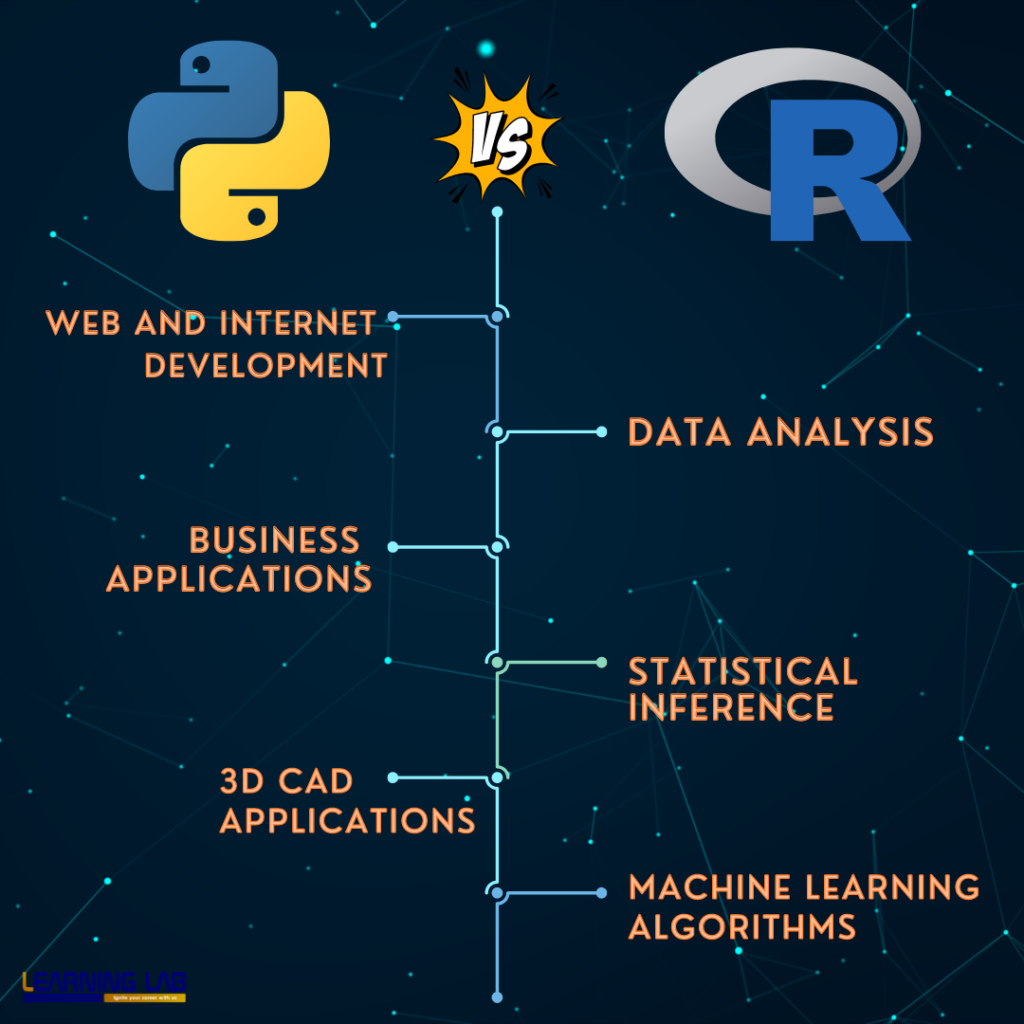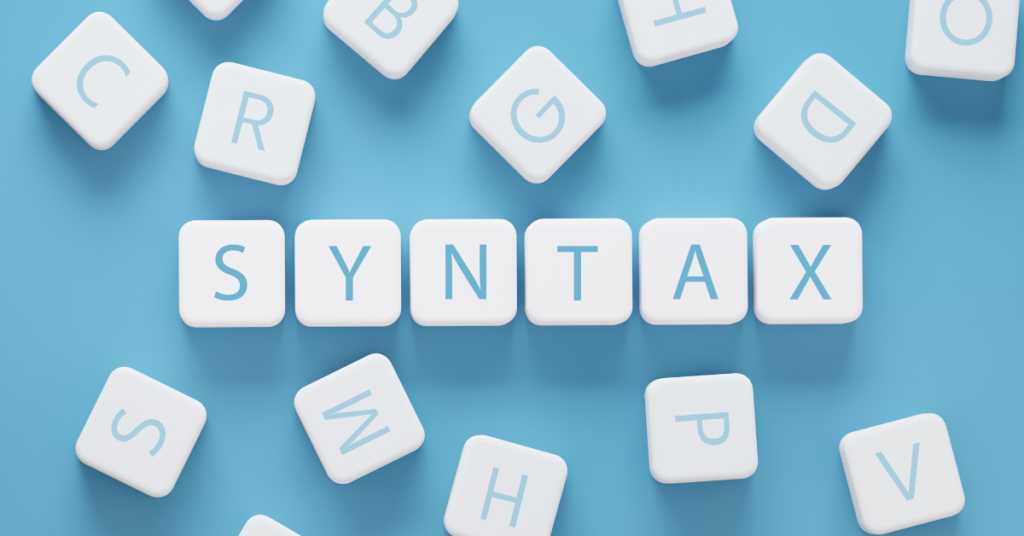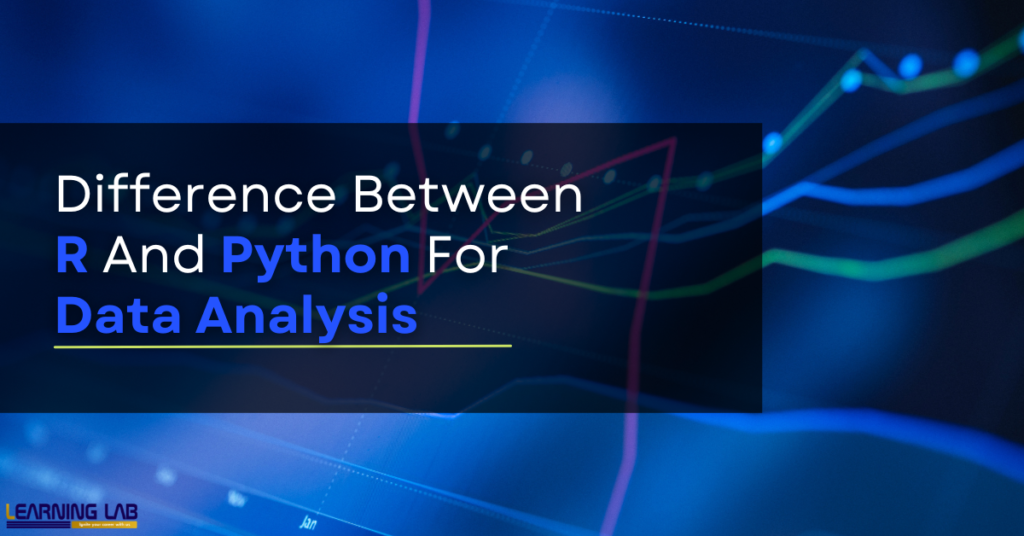The importance data analysis holds when it comes to industry insights and organisational operations is huge! And choosing the right tool can make a significant difference. Among the top tools for data analysis, R and Python stand out. But what exactly is the difference between R and Python for data analysis?
If you’re confused about which one to choose, you’re not alone. In this blog, Ze Learning Labb will help you explore the R vs Python libraries for data analysis, compare their syntax, and help you decide which is better for data analysis: R or Python.
This article contains the following:
- Difference Between R And Python For Data Analysis
- R Vs Python Libraries For Data Analysis
- R Vs Python Syntax Comparison For Data Analysis
- Which Is Better For Data Analysis: R Or Python
Difference Between R And Python For Data Analysis
Both R and Python are powerful programming languages widely used in data science, machine learning, and data analysis. However, there are key differences that set them apart.
What Is R: An Easy Favorite of all Statisticians
R is a programming language that was developed specifically for statistical analysis. If your work revolves around statistical models, data visualisation, and advanced analytics, R might be the ideal choice for you. Its extensive collection of packages and libraries caters to a wide range of statistical techniques.
What Is Python: The All-Rounder
Python, on the other hand, is known for its originality and resourcefulness. While it wasn’t created specifically for statistics, it has grown into a robust tool for data analysis due to its simplicity, flexibility, and powerful libraries. Python’s application goes beyond data analysis, making it a popular choice for many fields, including web development and automation.

Continue reading to know more on “Which is better for data analysis: R or Python? “…..
6 Differences of R and Python
| Aspect | R | Python |
| Primary use | Statistical analysis and data visualization | General-purpose language used for various applications, including data analysis |
| Learning curve | Steeper learning curve for non-statisticians | Easier for beginners due to its general-purpose nature |
| Community | Strong community focused on statistics and data analysis | Larger, more general community with a strong presence in data science |
| Libraries | Extensive packages focused on statistics (e.g., ggplot2, dplyr) | Broad range of libraries (e.g., Pandas, NumPy, SciPy) |
| Flexibility | Best for specialized statistical tasks | More versatile for multiple applications including machine learning |
| Syntax | More complex for non-statisticians | Cleaner and easier-to-understand syntax |
R Vs Python Libraries For Data Analysis
One of the main reasons people compare R vs Python libraries for data analysis is because both languages offer powerful tools for handling data. In R, libraries like ggplot2, dplyr, and tidyr are some of the best for performing statistical analysis and creating compelling visualizations.
Whereas Python offers libraries like Pandas for data manipulation, NumPy for numerical computing, and Matplotlib for plotting. The ecosystem of libraries in Python is vast, making it a strong contender for machine learning, artificial intelligence, and more complex data operations.
Both R and Python have vibrant libraries, but which one you choose depends on what you need. If your work leans towards advanced statistical analysis, R might be the better choice. BUT if you’re working on broader data science tasks, including machine learning, Python’s versatility makes it a strong option.
So, let’s get to learn what is the difference between r and python for data analysis here, yeah?!
R vs Python Syntax Comparison for Data Analysis
Another key difference between R and Python for data analysis is their syntax.
Python’s syntax is considered more readable and beginner-friendly. Even if you have no prior programming experience, you’ll find Python easier to learn. Python’s syntax uses indentation and is designed to be simple, making it ideal for those who want to get into programming and data analysis quickly.
In contrast, R’s syntax is more specialized for statistical operations. While this makes it incredibly powerful for statisticians, beginners may find it harder to grasp. For example, R uses different functions and operators to perform tasks that are simpler in Python, which can make it more challenging for new learners.
This R vs Python syntax comparison for data analysis shows that Python is the better option if ease of learning is your priority.

Example of Python Syntax for Data Analysis:
python
Copy code
import pandas as pd
data = pd.read_csv(‘data.csv’)
print(data.head())
Example of R Syntax for Data Analysis:
r
Copy code
data <- read.csv(‘data.csv’)
head(data)
Which Is Better for Data Analysis: R or Python?
The age-old question remains: Which is better for data analysis: R or Python? The answer depends on your specific needs.
- If your work involves heavy statistical modelling and visualisation, R is likely the better choice.
- If you are looking for a versatile tool that extends beyond data analysis, Python is your go-to.
In short, if your primary focus is on data science, the difference between R and Python for data analysis comes down to your specific use case. While R is more specialised for statistics, Python’s flexibility makes it better suited for broader applications.
On A Final Note…
The difference between R and Python for data analysis is clear: R excels in statistical tasks while Python’s versatility makes it a favourite for broader data science projects. Both languages have their strengths, and the choice between them ultimately comes down to the nature of the tasks you plan to perform.
If you’re still confused about which is better for data analysis: R or Python, the best advice is to explore both languages. Start with Python if you’re a beginner or need to work on machine learning projects, but consider R if your focus is strictly statistical analysis —and if you need expert guidance for the same, reach out to us here!





